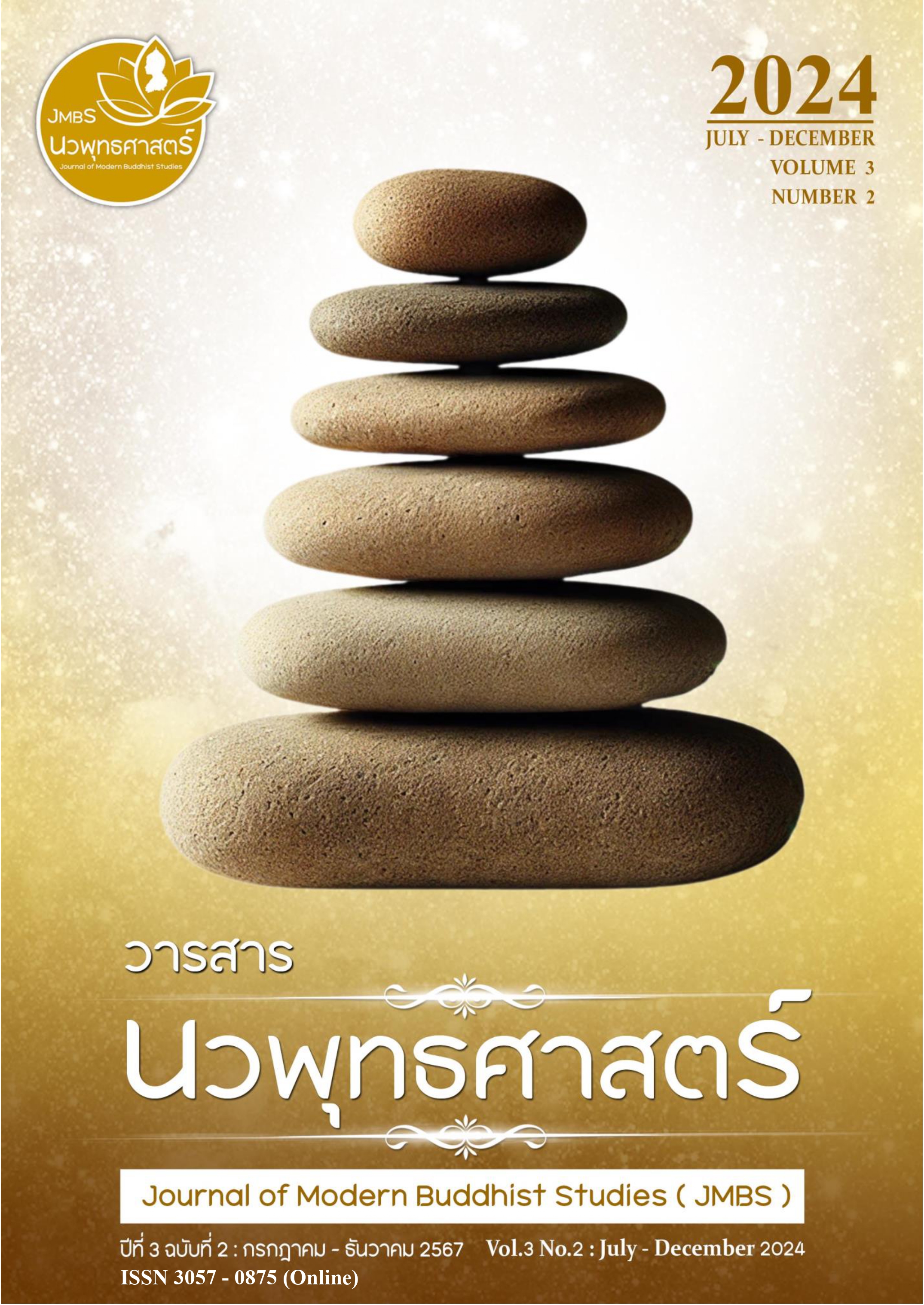Buddhist Artistic Heritage of Dvaravati: Artistic and Cultural Expressions in the Ancient Era
Keywords:
Heritage, Buddhist Art, Dvaravati, Art and CultureAbstract
This article explores the meaning of the term "Dvaravati," derived from the Sanskrit word Dvaraka, meaning "gate" or "entrance," associated with the sacred city built by Lord Krishna in Gujarat. The term was adopted by Prince Damrong Rajanubhab to date ancient artifacts and monuments from the Gupta, Post-Gupta, and Pala-Sena art periods. The study also examines cultural exchanges in Southeast Asia during the 6th-9th Buddhist centuries, focusing on trade connections between communities along the Pasak and Loei River basins and foreign merchants. These interactions facilitated cultural exchanges through ancient trade routes, evidenced by artifacts such as beads, pottery, and Dvaravati-style stone boundary markers (bai sema), linking the region's artistic traditions. Scholars suggest that bai sema were not only religious boundary markers but also symbols of religious beliefs and acts of merit-making. These cultural interactions reveal the influence of Theravāda and Mahāyāna Buddhism, along with Brahmanical traditions, as reflected in the discovered artifacts. This cultural synthesis has played a crucial role in shaping the cultural identity and invaluable heritage that has been preserved to the present day.
References
สมเด็จพระเจ้าบรมวงศ์เธอ กรมพระยาดำรงราชานุภาพ (2551). ตำนานพุทธเจดีย์. พิมพ์ครั้งที่ 3. กรุงเทพมหานคร: คุรุสภา.
กรมศิลปากร (2509). โบราณวิทยาเมืองอู่ทอง. กรุงเทพมหานคร: กรมศิลปากร.
วัชรินทร์ บัวจันทร์ (2561). “ศึกษาเรื่องแดนแห่งพลังศรัทธา”. วารสารศิลปกรรมศาสตร์ มหาวิทยาลัยขอนแก่น. ปีที่ 10 ฉบับที่ 2 (กรกฎาคม-ธันวาคม).
พลาดิศัย สิทธิธัญกิจ และคณะ (2555). อาณาจักรทวารวดี. กรุงเทพมหานคร: บริษัท เพื่อนเรียนเด็กไทย จำกัด.
บัญชา พงษ์พานิช และ คณะ (2557). จากอินเดียถึงไทย: รอยทางพระพุทธศาสนาแรกๆ. มหาวิทยาลัยมหาจุฬาลงกรณราชวิทยาลัย: สำนักงานพัฒนาเทคโนโลยีอวกาศและภูมิสารสนเทศ (องค์การมหาชน กระทรวงวิทยาศาสตร์และเทคโนโลยี.
สุจิตต์ วงษ์เทศ (2567). เมืองศรีเทพ ‘บรรพชน’ ประเทศไทย. [ออนไลน์]. แหล่งที่มา: https://www. msn.com/th-th/news/national/.
ปรีชา ขันทนันต์ (2567). พุทธศิลป์, [ออนไลน์], แหล่งที่มา: https://www.gotoknow.org/posts/548679.
บัณฑิต ลิ่วชัยชาญ และคณะ (2553). “การประดิษฐานพระพุทธศาสนาจากลังกาทวีปในดินแดนประเทศไทยสมัยวัฒนธรรมทวารวดี”. รายงานการวิจัย. กรุงเทพมหานคร: สำนักพิมพ์สมาพันธ์ จำกัด.
นงเยาว์ ชาญณรงค์ (2549). วัฒนธรรมและศาสนา. พิมพ์ครั้งที่ 6. กรุงเทพมหานคร: สํานักพิมพ์มหาวิทยาลัยรามคําแหง.
ธรรมะไทย (2567), พระวิหารที่ประทับของพระพุทธเจ้า. [ออนไลน์]. แหล่งที่มา : http://www.dhammathai.org/buddha/g43.php.
คณะกรรมการวัฒนธรรมแห่งชาติ (2540). สํานักงานศิลปะนแห่งชาติ 2539. กรุงเทพมหานคร: โรงพิมพ์คุรุสภาลาดพร้าว.
วิกิพีเดีย สารานุกรมเสรี (2567). วัฒนธรรม. [ออนไลน์]. แหล่งที่มา: https://th.wikipedia.org/wiki/.
วีระ บํารุงรักษ์ (2567). กลุ่มประชาสัมพันธ์ สํานักงานคณะกรรมการวัฒนธรรมแห่งชาติ กระทรวงวัฒนธรรม. ความหมาย แนวคิดและประเด็นที่เกี่ยวกับ “วัฒนธรรม”. [ออนไลน์]. แหล่งที่มา:http://www.openbase.in.th/node/ 5954.
White, Why Community Paticipation? A Discussion of the Argumentes. Community Paticipation: Current Issue and Lesson Learned, (New York: United Nations Children'S Fund, 1982).
Baptiste, P. (2012). Dvaravati: The earliest kingdom of Siam. River Books.
Higham, C. (2014). Early Thailand: From prehistoric to Sukhothai. River Books.
Indrawooth, P. (2004). The archaeology of the early Buddhist kingdoms of Thailand. Asian Perspectives, 43(2), 255–280.
Welch, S. (1967). The Dvaravati civilization of Southeast Asia. Artibus Asiae, 29(1), 59–80.
Downloads
Published
How to Cite
Issue
Section
License
Copyright (c) 2024 Journal of Modern Buddhist Studies

This work is licensed under a Creative Commons Attribution-NonCommercial-NoDerivatives 4.0 International License.






